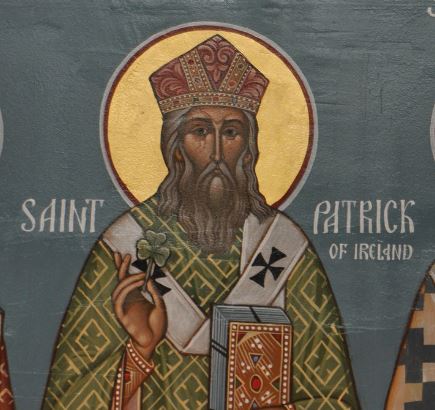
St. Patirck wasn’t alone for long
Russian Church continues adding Western Saints to its Church Calendar
At its March 9 session, the Holy Synod of the Russian Orthodox Church decided to add St. Patrick, the Enlightener of Ireland, St. Alban the Protomartyr of Britain, St. Genevieve of Paris, and twelve other Western saints from the first millennium, before the West departed into heresy, to its official calendar.
As Interfax-Religion reports, the Russian Orthodox Church intends to continue adding such revered Western Church figures to its calendar for annual celebration. Metropolitan Hilarion (Alfeyev) of Volokolamsk stated on the “Church and the World” television program that
“This process is not completed. It has only started.”
According to the bishop, St. Patrick and the others were added to the calendar at the request of Russian dioceses in the diaspora which have already been venerating such saints.
“There are other Western saints whom I hope will also soon be included in the calendar of our Church,” His Eminence stated.
As he explained, the Russian Church’s guiding criteria is that the saint is venerated and included on the calendar in a certain locality, and that the saint lived before 1054, “as everything that happened afterwards belongs to the separate history of the Orthodox Church and Catholicism.”
He also noted that it is important that the person was not engaged in a struggle against Orthodoxy,
“as happens with certain Western religious figures.”
Furthermore, the official inclusion of Western saints onto the calendar should not be seen as a step towards rapprochement with the Catholic communion, but rather it is a realization of the local reality of the one, true Orthodox Church, as all true saints of the first millennium, whether Eastern or Western, belong to the Orthodox Church.

I nominate St. Walburga of Eichstadt
Don’t tell us, tell them! 😉
I would love too. How can I do that?
I suggest a letter to the Department of External Affairs. It may not go far, but who knows.
Question : do different Orthodox jurisdictions honor different saints? Or is a saint in the OCA , for example, also considered a saint in the Greek church?
An Orthodox saint is an Orthodox saint everywhere. Sadly, in some churches the tendency can be to only venerate/have icons of saints from their own tribe, but this never lasts long.
Plus there are saints that are not known everywhere and are only venerated after they are known. That takes some time. There was a bishop from the country of Georgia who celebrated the Liturgy with our Bishop Basil awhile back. Bishop Basil made him a gift of the service for and icon of St. Raphael of Brooklyn previously unknown in Georgia.
I suspect there are Georgian saints of which many are ignorant here. God, however knows them all.
Amen and amen
I sent off an E-mail with my suggestion. Mother Walburga is an 8th century missionary to Germany from England. She and her brother before her fought hard to establish the faith in the German people. She was an Abbess of a monastery in Eichstadt now Benedictine. Since her repose her relics have exuded a healing myrrh every year beginning in October through the time of her repose in February. My late wife was devoted to her and my sister-in-law managed to obtain a bottle of Mother Wslburga’s myrrh which I gave to my parish. Not long after my wife died. While on her death bed, my priest annointed my wife with the myrrh. It obviously eased my wife’s passing.
Just wanted folks to know why I suggest her. I was introduced to her by my Bishop, his grace Basil(Easy) when I was looking for a German saint.
God is wonderous in His saints.
Truly glorious!
Read Fr. Lev Gillet’s funeral homily of 1937 honoring Archimandrite Irene (Louis Charles) Winnaert, founder of the Orthodox Church of France: “O strange Orthodox Church, so poor and weak, with neither the organization nor the culture of the West, staying afloat as if by a miracle in the face of so many trials, tribulations, and struggles; a Church of contrasts, both so traditional and so free, so archaic and so alive, so ritualist and so personally involved, a Church where the priceless pearl of the Gospel is assiduously preserved, sometimes under a layer of dust; a Church which in shadows and silence maintains above all the eternal values of purity, poverty, asceticism, humility, and forgiveness; a Church which has often not known how to act, but which can sing of the joy of Pascha (Easter) like no other.”
Remember that 1937 was a time of terrible violence, betrayals, and lies with the Bolsheviks in Russia, the Nazis in Germany and Europe,
Warlords reviving and spreading Shintoism into the Koreas, Mongolia, China, and the westerand, yes, all too many slaves of apostasy in the so-called “free world.”